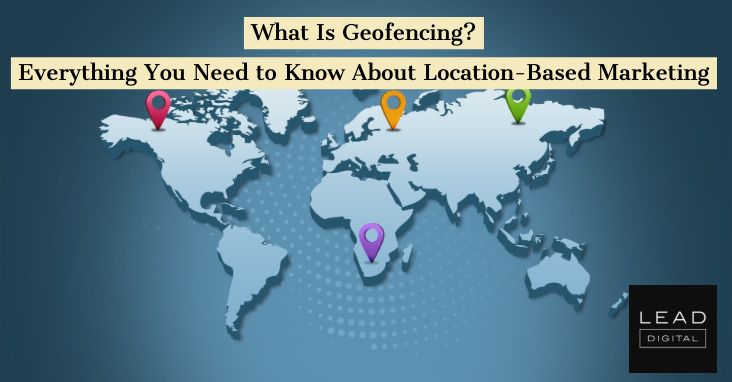 With the growth of mobile phone usage (worldwide penetration is expected to reach 63.4 percent by the end of 2019), mobile marketing has been growing by leaps and bounds.
With the growth of mobile phone usage (worldwide penetration is expected to reach 63.4 percent by the end of 2019), mobile marketing has been growing by leaps and bounds.
More recently, marketers have taken full advantage of its capabilities with geofencing, an incredibly powerful way to harness the power of location based marketing.
While using geofencing for advertising is not a new concept, nor is it simply limited to mobile (more on that later), its popularity has grown along with the rise of smartphone users. (It’s estimated that are more than 5 billion smartphone users today.)
What Exactly is Geofencing?
Geofencing is a location-based service in which an app or other software program uses radio frequency identification (RFID), Wi-Fi, GPS, or cellular data to trigger a targeted marketing action (such as a text, email, social media advertisement, app notification) when a mobile device or RFID tag enters or exits a virtual geographic boundary, known as a geofence.
A simple example of geofencing is when a young woman walks near a Sephora retailer at the mall and receives an app notification that says: “Today only! Buy 1 lipstick, get 1 free!”
You can track a consumer’s location through GPS, Bluetooth, and beacons, and there are three ways to utilize this technology for targeting consumers: geotargeting, geofencing and beaconing.
Whereas geofencing is focused on delivering targeted advertising to desktop users based on their location, and beaconing is focused on transmitting targeted messages and information to nearby mobile devices, geofencing is focused on the virtual perimeter you build around a specific geographic location to deliver targeted messaging.
There are many types of alerts you can send when a user enters a geofence. The more popular types include text messages, in-app notifications and social media ads.
Geofences can be set up on mobile, tablet, and even desktop devices anywhere in the world. Geofencing can be configured to target a certain place (such as the mall mentioned above), a demographic market area, a business category (e.g., restaurants), a brand location (say, all the Sephoras worldwide), a city, or a state.
Geofencing Statistics
For obvious reasons, geofencing can produce incredible results for marketers looking to roll out hyper-targeted, location-based marketing. But don’t just take our word for it:
- Mobile ads with geofencing have double the click-through rate.
- Geofencing is compatible with 92% of smartphones.
- The average consumer spends 5 hours a day on their mobile device.
- 71% of consumers prefer a personalized ad experience.
- 3 out of 4 consumers complete an action after receiving a message when approaching a specific location
- 53% of shoppers visited a retailer after receiving a location-based message
Main Benefits of Geofencing
What is it about geofencing that gets marketer’s excited and how can it help your marketing efforts? Here are the major benefits:
Better Targeting
With the ability to hyper-target prospects you’ll not only be able to reach folks at the right time and at the right place but be able to engage them with messaging that is relevant and timely.
By targeting folks in a specific geographic area, and filtering that area by specific targeting criteria, you’re much more likely to engage your prospects. Using the Sephora example above: a marketer would not send out the “lipstick” messaging to any Jane, Dick or Harry that walked by, rather would have targeted that ad to a specific demographic.
Spend Effectiveness
When your advertising is hyper-targeted, and sent at the right time and right place, your engagement numbers go up. With geofencing, you’re spending marketing dollars on prospects that are most likely to take action, and spending less money on those that are not.
Improved Data Collection
Once geofencing is implemented you’ll get access to a ton of insightful data metrics such as insights on which brick and mortars are performing better, which target segment has higher engagement, traffic patterns (when people are in/near your locations), stay durations, and messaging effectiveness.
By combining this collected information with online activity, purchase information and web browsing behaviors a business can improve the user experience, increase engagement, and better understand user behavior. This same information can also be used to target folks who have previously visited certain locations, to create customized follow-up messaging. – Read more



